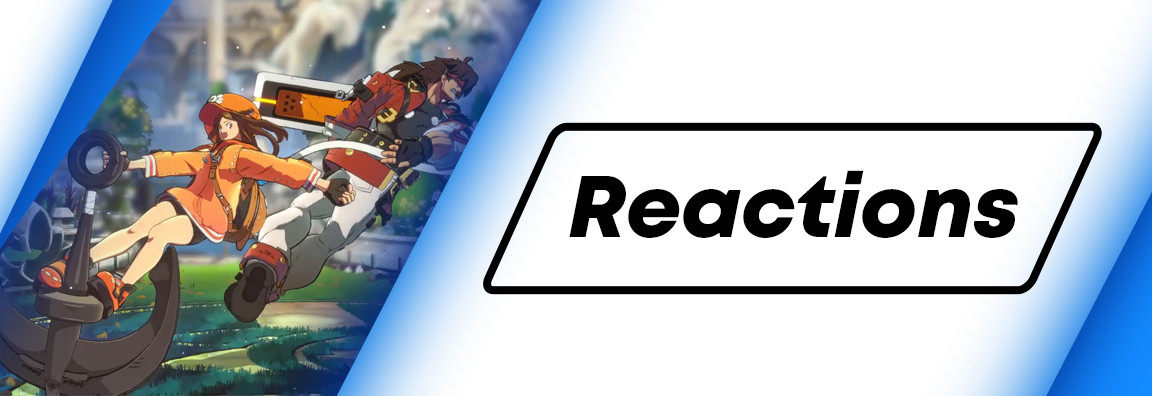Reaction speed in fighting games can separate pool players from top 8 finishers, but it isn’t essential to succeed. Everyone’s response time to specific moves or situations differs. Slower players often adopt certain playstyles to mitigate their weakness, while quick players generally pick speedy characters who capitalize on that strength. Let’s discover how to improve your reaction speed, how to win more games even if you’re slow, and why you should put in the effort to react faster.
Why is reaction speed important for fighting games?
First off, why do you need good reaction speed in fighting games? The answer is obvious. Fighting games are an endless onslaught of “if-then” situations. Players constantly think along the lines of, “When my opponent does X, I should respond with Y,” without deviating from their game plan.
The X in that quote commonly applies to specific moves that put you in bad situations. For example, an overhead attack will hit you if you block low. Recognize your opponent’s animation and react accordingly with high blocks or invincible reversals to escape each situation. Your opponent will use similar-looking moves, command grabs, and attacks that hit low even though their character is standing.
Consider every option throughout practice matches for less stressful tournament experiences. The amount of information players must process across frame data, the opponent’s habits, and your own options can easily overwhelm beginners.
Can you win if your reactions are slow?
Coming from someone with reactions on the slower side, yes. There are many ways to win competitive fighting games without fast reaction speed:
You can avoid the situation through specific character archetypes
There is a saying in fighting games. “Don’t get hit.” If you don’t get hit you can avoid situations that require reactions. Play zoners, high-pressure rushdown characters, or setplay characters to constantly keep your opponent in those same undesirable situations. Of course, you’ll still get hit sooner or later. That’s why you need practice.
PRACTICE!
Even a player with bad reaction skills can drill situations into their muscle memory. Once you get hit by something that you think is reactable, go into training mode and record a training dummy to recreate the situation. Learn the speed of the move, its animation, and anything else noticeable to you. After enough practice, you’ll recognize it through muscle memory, then block far more consistently without good reaction speed.
Take that practice into matches
Practice isn’t the only thing that will improve your muscle memory reactions. Recognition and reaction also rely on real match experience. Face off against characters that you often struggle against in specific situations. Repetition like a trial by fire will force you to adapt through more consistent blocks.
Its not that I can react faster than him, its that, thanks again to my experience level, I have a better understanding of what I should be looking for and how to act in a huge variety of dangerous fighting game situations. He doesn't have that. 4/
— Adam Heart (@TheKeits) September 10, 2019
Doing all of this will take you far in fighting games regardless of your reaction speed. But if you want to boost that speed even just a tiny bit, then there is something else you can do.
How to increase reaction speed
The belief that it’s impossible to improve your reaction speed is false. Studies show that increased reaction time is one positive effect of exercise like jogs or push-ups.
“Through acute-intense exercise, athletes between the ages of 19-22 years old would continue to improve their reaction time, making them better equipped to participate in a fast paced environment that many sports encompass,” A Wisconsin Minds study concluded from an experiment on exercise and reaction time.
“As for senior citizens, since this experiment draws conclusions for 19-22 year olds, incorporating acute-intense exercise in their daily schedule starting in their early twenties, could have significant long-term health benefits later in life. By establishing an exercise regimen early in life and maintaining it, senior citizens would ultimately improve their reaction time, which could aid in balance and coordination.”
Other studies also prove that you shouldn’t neglect training outside of the game, especially since you can speed up your in-game reactions through physical exercise.
Proper rest and eye care are also essential to maintain good reaction speed. While the rest is self-explanatory, visual health is another story. Competitive gaming requires a lot of screen time, which can strain your eyes.
Keep a proper arm’s length distance from your screen, adjust your brightness to a comfortable level, and take breaks to rest whenever you feel fatigued. The YouTube channel, Esports Healthcare goes even more in-depth on this topic with additional tips to avoid eye strain. Some of the recommended exercises are as simple as blinking, then looking away from your screen.
You may not have the best reactions in the world but that doesn’t mean you can’t win. If you want to put in the work, you have ways to improve your reaction speed through exercise and physical wellness. So no, reactions probably aren’t why you’re losing. Unless you’re trying to react to unreactable moves, which in that case, have fun guessing.
Stay tuned to the Competition Center for tips on work ethic, coaching, and other tactics that might be just what you need to end up on the other side of the results screen.
